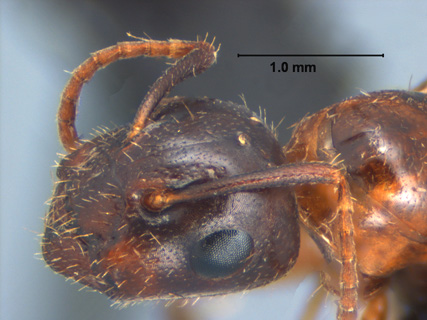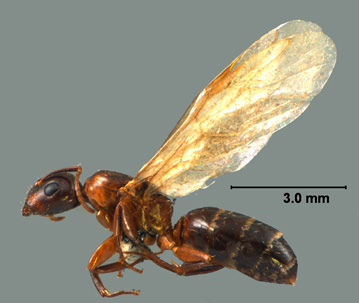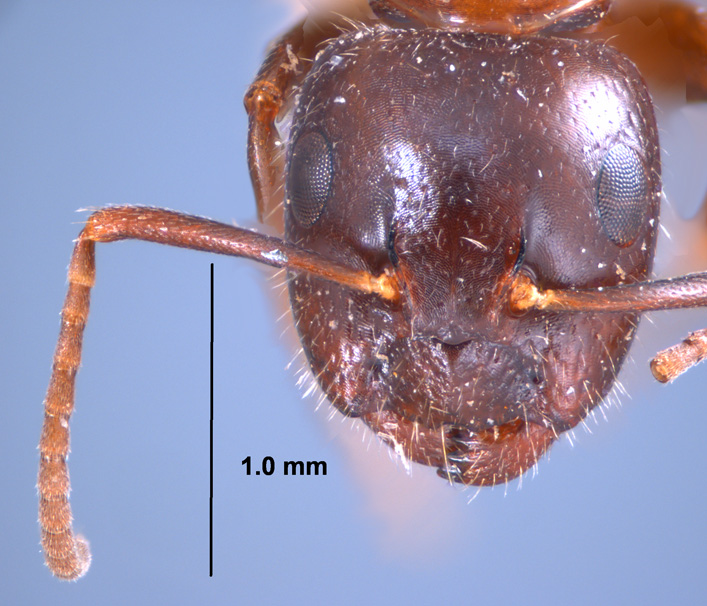Camponotus caryae, view of the head of a queen. Note the numerous erect hairs on the gena and clypeus. (click on image to enlarge). |
Camponotus caryae, profile view of an alate queen (click on image to enlarge). |
Camponotus caryae, full face view of a worker (click on image to enlarge). |
Camponotus caryae, profile view of a worker (click on image to enlarge). |
Introduction
Ants in the genus Camponotus are collectively known as carpenter ants because some species nest in wood, including man-made structure. This genus includes some of the largest and most common ants in the world, and they are found in all biogeographical regions (Bolton, 1995). More than 900 species of Camponotus are known worldwide, with 50 species reported from the United States (Hanson and Klotz, 2005), and 20 species found east of the Mississippi River (Deyrup, 2003; Smith, 1979).
Species in this genus are variable in size with workers ranging in size from 3 to 15 mm or more in length and queens (also referred to as females) of some species attaining a length of 19 mm or more. Many species are polymorphic. Workers have a 12-segmented antenna that lacks an apical club. Antennal fossae do not touch the posterior border of the clypeus. Ocelli are not present on the heads of workers. The workers of most species have an indistinct metanotal suture between the promesonotum and the propodeum, although this suture is present in C. sexguttatus and some members of the subgenus Colobopsis. Those species that lack the obvoius and deep metanotal suture have the shape of the alitrunk in a smoothly curved arc (as seen in profile).
Identification
Camponotus caryae (Fitch) workers range from 3.5 to 7.5 mm in overall length. This species is in the subgenus Myrmentoma, which can be generally characterized as having a notch or emargination in the middle of the anterior border of the clypeus. This particular species can be distinguished from others in the subgenus by the long erect hairs along the clypeal margins and numerous erect hairs across the clypeal disc, of which many are about equal to the numerous erect hairs found on the gena. In addition, this species is concolorous dark brown, which is basically the only practical way to separate it from the closely related C. discolor, which has a reddish head, alitrunk and petiole and a blackish gaster. Some consider the two to be forms and in that case the name Camponotus caryae has priority.
Biology and Economic Importance
This species has only been collected on limited occasions in AL and MS. Alates have been collected in late May.
Distribution
Literature Cited
Links
AntWeb Images
Discover Life Images
|






